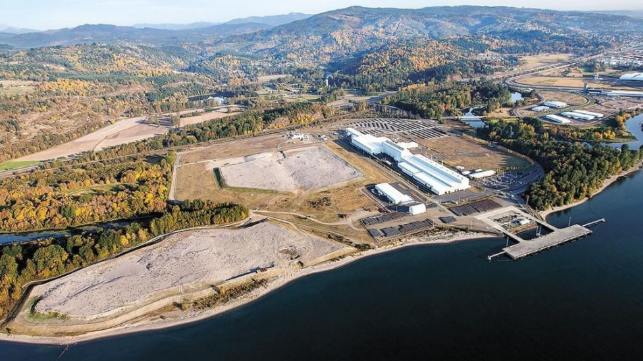Controversial Kalama Methanol Plant Secures Investment from Hafnia

The backers of a proposed methanol plant at the small port of Kalama, Washington have received a $10 million investment commitment from tanker operator Hafnia, the second shipping line to take an equity stake in the complex.
Northwest Innovation Works - a venture spearheaded by state-owned Shanghai Bi Ke Clean Energy Technology Co. - is planning a $2 billion natural gas-to-methanol petchem plant at Port of Kalama, a town on the Columbia River about 70 river miles inland from the Pacific. The 3.6 million tonnes per annum plant would use West Coast-sourced gas to produce about one MR tanker's worth of cargo every four days. After contributing $10 million in equity, Hafnia would carry one-third of the plant's volume for 19 years on a long term charter; in a press release, Hafnia said that the charter promises a "satisfactory guaranteed return."
Mitsui O.S.K. Lines (MOL) made a similar investment in June, and it will be carrying the balance of the cargo volume. “You have forward-thinking, intelligent people who are committing and investing and wanting to see this go forward,” NWIW chief commercial officer Kent Caputo told the local Daily News.
If the gas-consuming Kalama facility displaces (rather than augments) the production of future higher-emission, coal-based methanol plants, the project would reduce net carbon emissions on a global basis, according to the Washington State Department of Ecology. Its onsite carbon emissions would rank it among the 10 largest emitters of CO2 in the state, but it would offset this state-level impact by sponsoring carbon-uptake projects.
Methanol as a fuel
In keeping with the nature of the project, Hafnia will use new methanol-fueled ships for its long-term cargo charter. However, the partners have promised that they will not use the Kalama plant's methanol as fuel. Instead, they will bunker overseas, preserving the cargo for use in plastics production.
According to a recent study by DNV GL, methanol from natural gas is the most carbon-intensive marine fuel under consideration on a well-to-propeller basis - exceeding the emissions of HFO by about 10 percent to produce an equivalent amount of energy. In the destination markets in China where these vessels will call, a substantial portion of the methanol supply is derived from coal, a more carbon-intensive fuel.
The project's opponents have raised related questions about the potential use of Kalama's output as a transportation fuel, which would result in higher CO2 emissions compared with its use for plastics production. NWIW has described the initiative as a plan to supply methanol for petchem companies only, but its state backer says that it specifically wants to see more methanol used as a fuel.
"If we replace diesel, coal and gas with methanol to power vehicles, emissions of [particulate matter] would be slashed by 80 percent," said Wu Lebin, the chairman of NWIW backer Chinese Academy of Sciences Holdings Co., in a 2017 interview about the new Kalama plant. Wu noted that due to the low price of American shale gas, Kalama's methanol would also be substantially less expensive. (Chinese Academy of Sciences Holdings Co. owns Shanghai Bi Ke Clean Energy Technology Co., which owns Pan-Pacific Energy Corp., the primary backer of NWIW.)
In its most recent environmental impact analysis, the Washington State Department of Ecology concluded that the Kalama project "would lead to methanol being burned as a fuel" by increasing its availability in China. However, it determined that the plant would still reduce global carbon emissions overall: more methanol will be produced for the global market in the years ahead, it reasoned, and producing it with natural gas at Kalama is less carbon-intensive than producing it with coal in China.
“With the release of [Ecology's] report, we have further credible validation that the Kalama facility drives a global net reduction in GHGs,” said NWIW's Caputo in a statement. “Ecology’s best estimate is that NWIW’s Kalama facility will result in a global net reduction of over six million metric tonnes of GHGs every year, which is equal to eliminating approximately two times the number of GHGs as the entire city of Seattle emits annually."
The local environmental NGO Columbia Riverkeeper, which has long opposed the project, interpreted the department's findings differently. "Ecology’s new analysis reveals what the project’s backers have long denied: that the refinery would cause more methanol to be burned as fuel in China and result in significant methane pollution from fracking. The methanol refinery would quickly become one of Washington’s most significant sources of climate-changing pollution and use more fracked gas than all of Washington’s gas-fired power plants, combined," the group said in a statement.
